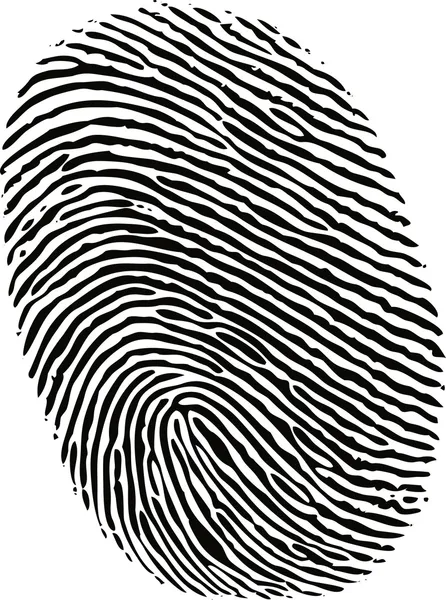History of Fingerprinting:
 |
| http://static5.depositphotos.com/1026645/439/v/450/dep_4395062-Editable-vector-fingerprint.jpg |
Fingerprints have been used to identify criminals for over 100 years, they are also the most commonly used forensic evidence worldwide. One of the reasons that they are so commonly used is that fingerprints do not change over time while other features do. Fingerprints were first used for identification by William Herschel; he used these fingerprints as identification on contracts. Later a man named Alphonse Bertillon devised a system known as the Bertillon system that took measurements such as head length, width, and length of the middle finger, length of left foot, and length of the forearm to elbow. These measurements were used to then classify criminals by their characteristics, although when a man was sent to prison and it was found that he shared measurements with another prisoner the Bertillon System was called into question as a reliable method of identifying criminals. Later in 1883 Mark Twain wrote a book in which fingerprints were used to catch a murderer. Then in 1892, when a women murdered her two sons a bloody fingerprint was used by Juan Vucetich to link the women to the murder. The use of fingerprints started to become widely used in the 1900’s. In 1901 England and Wales starting using fingerprints for criminal identification. Then in 1902 fingerprints were used for evidence for the first time in English courts. In 1905 the U.S army began using the fingerprints for identification of soldiers. One of the main issues of fingerprinting was that it took weeks to sort through the different fingerprints and find a match, but then in 1980 the first computer database of fingerprints was developed. As computers became more developed they have been able to improve the identification of fingerprints and combine fingerprints from all across the world into a single database.
The Basic Types of Fingerprints:
There are three basic types of fingerprints: Visible or Patent prints, latent prints, impressed or plastic prints. Visible prints are fingerprints that have been left in a substance like blood or ink that leaves the prints visible to the naked eye. Latent prints are fingerprints that are left when sweat forms on the body and then the hand comes in contact with a surface, they are not visible to the naked eye and must be developed by dusting, fuming, or through the use of chemical reagents. Impressed prints are fingerprints that are left in a pliable substance such as wax or clay.
Latent:
Plastic:
Patent:
| ||||||||
There are several different ways to develop prints on different surfaces, dusting, fuming, or use of a chemical reagent. Dusting is one of the most common and widely used methods, although the actual powder used can differ depending on the color and substance of the surface the print is on. For this method you put dust the print with the powder, then use tape to lift the print off the substance and preserve it. There are many different chemical reagents used to develop prints, but one of the most common in ninhydrin, this chemical is swabbed, or dripped onto the surface then it reacts with the amino acids in the print and lights it up allowing it to be visible to the naked eye. One of the most common methods of fuming involves emitting iodine vapors over the print which will then light up the print for a short amount of time.
Basic Fingerprint Patterns:
There are three basic types of fingerprints: arches, loops, and whorls. Loops are seen in about 60-70% of patterns encountered, they are when the ridge enters from one side, recurves and then touches or crosses the line form core to the delta. Whorls are seen in about 15-35% of prints, any print that has two or more deltas is a whorl. Arches are in about 5% of prints, an arch is when the ridges go from side to side with an upward “tent” in the middle.
http://t0.gstatic.com/images?q=tbn:ANd9GcRHIITkU3nCuEN0tBJeg1aqA59SWkR6O1f1MDKVYy50RVwxef8i5LcMEWAb |
Techniques to Lift Fingerprints:
There are many different techniques to lift prints, but the three most common are: hinge lifter, rubber lifter, and cellophane tape. When using a hinge lifter you place the lifter part on the print evenly, then lift it away and you use the hinged cover to protect the print from any contaminants. With the rubber lifter you remove the plastic cover, place the adhesive side of the tape on the print, then peel it away, use a plastic cover to protect the print. Cellophane tape is used on non-flat surfaces because it attaches to the contours of the surface. You should rub the tape gently over the print, then lift it away gently as well. Quickly apply it to a card or paper to preserve the print. When using these methods it is important to avoid getting your own fingerprint on the tape. You should also avoid bubbles because they will destroy the print.
 | |
|


Good details and good pictures.I did not find any incorrect facts. Also, good job on citing the pictures.
ReplyDeleteThank you
ReplyDeleteAn interesting section for collecting prints. Didn't know you had to you certain types in order to collect fingerprints on different surfaces! Great job with the history.
ReplyDelete